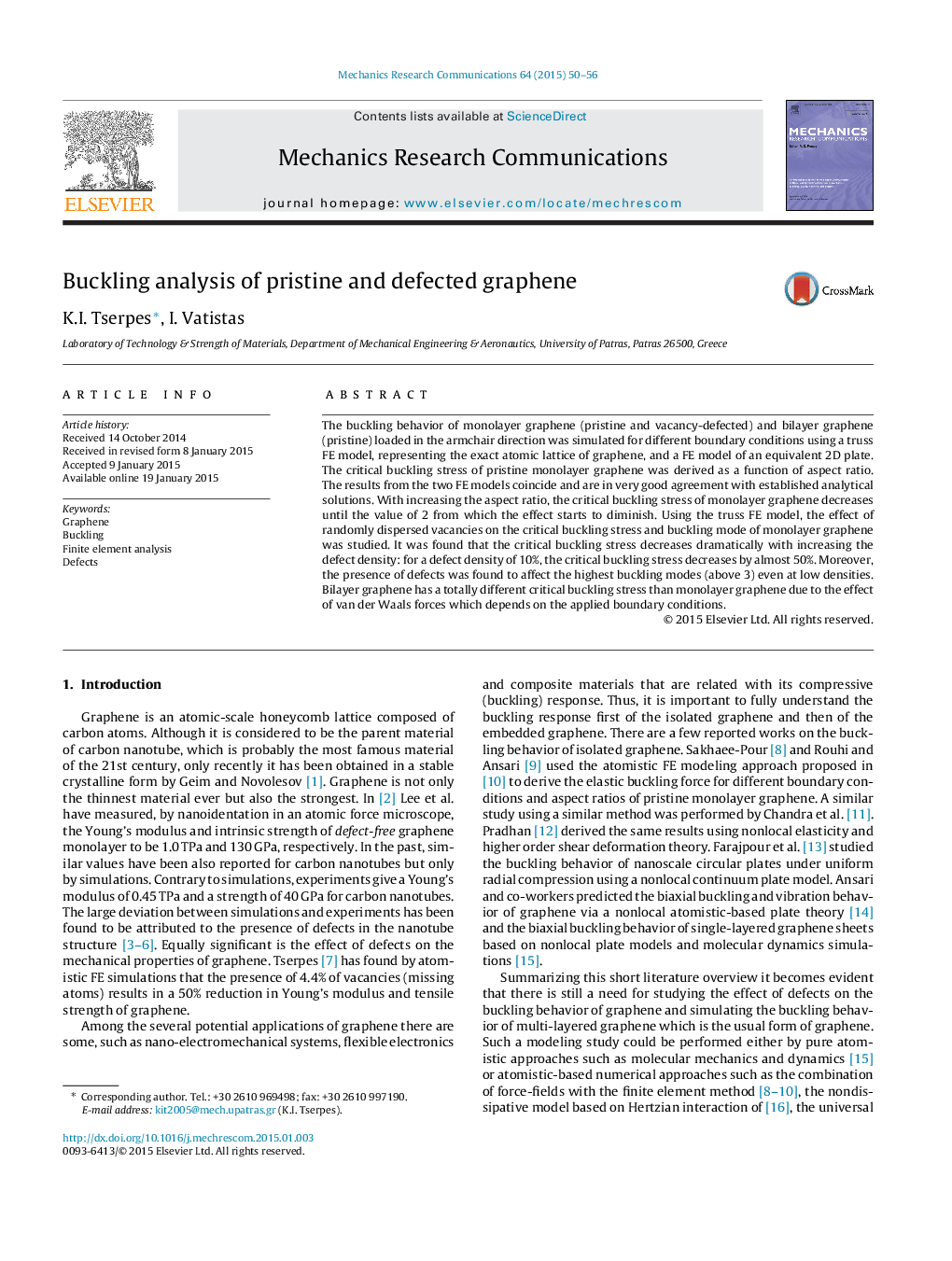| Article ID | Journal | Published Year | Pages | File Type |
|---|---|---|---|---|
| 799059 | Mechanics Research Communications | 2015 | 7 Pages |
•We simulate the buckling behavior of monolayer and bilayer graphene using two different FE models.•Numerical results are validated against analytical solutions.•We examine the effect of vacancy defects on the buckling behavior of monolayer graphene.•We show that pristine monolayer graphene could be represented by an equivalent 2D plate.•We show that bilayer graphene has a different critical buckling stress than monolayer graphene.
The buckling behavior of monolayer graphene (pristine and vacancy-defected) and bilayer graphene (pristine) loaded in the armchair direction was simulated for different boundary conditions using a truss FE model, representing the exact atomic lattice of graphene, and a FE model of an equivalent 2D plate. The critical buckling stress of pristine monolayer graphene was derived as a function of aspect ratio. The results from the two FE models coincide and are in very good agreement with established analytical solutions. With increasing the aspect ratio, the critical buckling stress of monolayer graphene decreases until the value of 2 from which the effect starts to diminish. Using the truss FE model, the effect of randomly dispersed vacancies on the critical buckling stress and buckling mode of monolayer graphene was studied. It was found that the critical buckling stress decreases dramatically with increasing the defect density: for a defect density of 10%, the critical buckling stress decreases by almost 50%. Moreover, the presence of defects was found to affect the highest buckling modes (above 3) even at low densities. Bilayer graphene has a totally different critical buckling stress than monolayer graphene due to the effect of van der Waals forces which depends on the applied boundary conditions.
